Machines, not yaks, plow in Tibet, but tradition remains
Updated: 2022-03-16 (chinadaily.com.cn)  Print
Print 


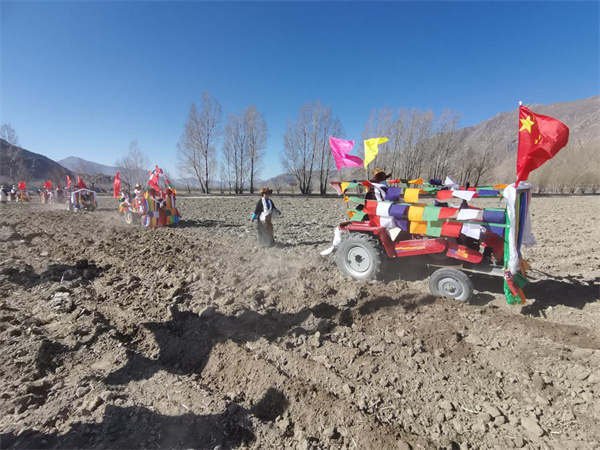
Dressed in their newest and best traditional attire, Tibetan farmers in Chushul county and the Dagze district of Lhasa, Tibet, participate in spring plowing ceremonies on March 16, 2022. [Photo provided to chinadaily.com.cn]
Dressed in their newest and best traditional attire, Tibetan farmers in the villages of Lhasa, Tibet autonomous region, participated in annual ceremonies on Wednesday to mark the start of this year's plowing season.
As the brilliant plateau sun shot its first rays from the distant snow-capped mountains to the farms of the Lhasa River Valley, villagers gathered in the fields in the brisk air for religious prayers, butter tea, barley wine, traditional songs and dances to express their hope for a good harvest.
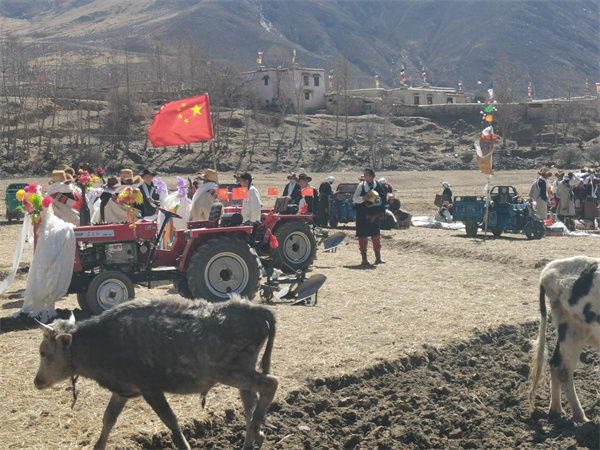
Dressed in their newest and best traditional attire, Tibetan farmers in Chushul county and the Dagze district of Lhasa, Tibet, participate in spring plowing ceremonies on March 16, 2022. [Photo provided to chinadaily.com.cn]
Yaks and horses no longer pull the plows as they did decades ago in most villages; however, the cultivators dress up as yaks in some villages to show gratitude to the animals or commemorate their traditional role.
Some residents are still in the celebratory mood of the two-week-long New Year Festival, but they have to go back to the fields as temperatures warm.
On farms totaling 433 hectares, villagers in Bude village in Lhasa's Chushul county mainly grow wheat, barley, potato, and corn.
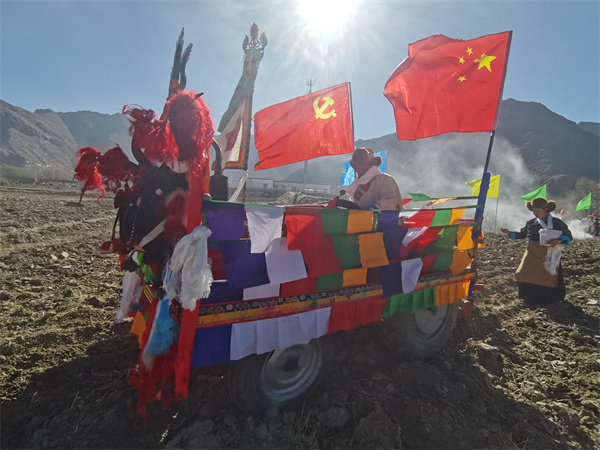
Dressed in their newest and best traditional attire, Tibetan farmers in Chushul county and the Dagze district of Lhasa, Tibet, participate in spring plowing ceremonies on March 16, 2022. [Photo provided to chinadaily.com.cn]
Phurbu Tashi, a Tibetan resident of Bude, said his family owns 2 hectares of land and uses it mostly to grow wheat. They also plant a small quantity of corn, potatoes and rapeseed.
"Unlike in the past, when we used animals to plow, machines make it easier for people. They're more efficient," Phurbu Tashi said. "Yields are also better with the support of machines. Last year, my family income from crops reached more than 50,000 yuan."
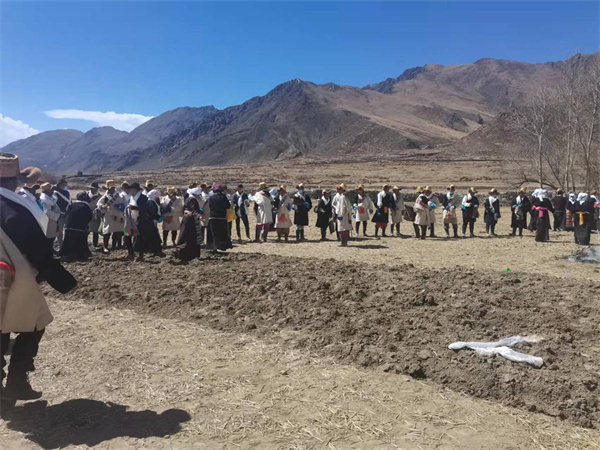
Dressed in their newest and best traditional attire, Tibetan farmers in Chushul county and the Dagze district of Lhasa, Tibet, participate in spring plowing ceremonies on March 16, 2022. [Photo provided to chinadaily.com.cn]
This year, Tibet's planted area is expected to hit 237,000 hectares, including 165,000 hectares of grain, 26,300 hectares of vegetables, 18,000 hectares of rapeseed and 27,500 hectares of forage grass, according to the region's Department of Agriculture and Rural Affairs.
At present, the region's spring sowing production work is in full swing in low-altitude valleys.
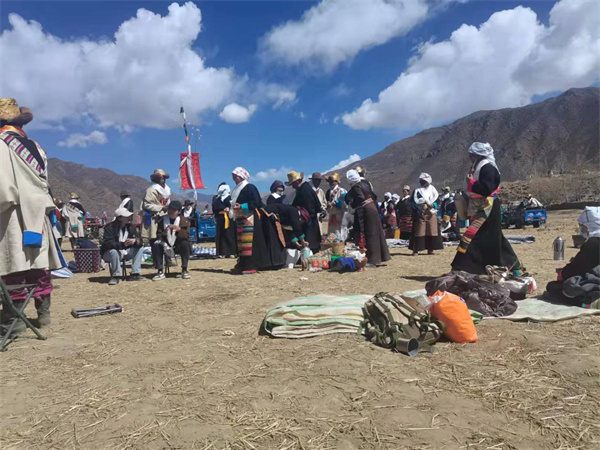
Dressed in their newest and best traditional attire, Tibetan farmers in Chushul county and the Dagze district of Lhasa, Tibet, participate in spring plowing ceremonies on March 16, 2022. [Photo provided to chinadaily.com.cn]
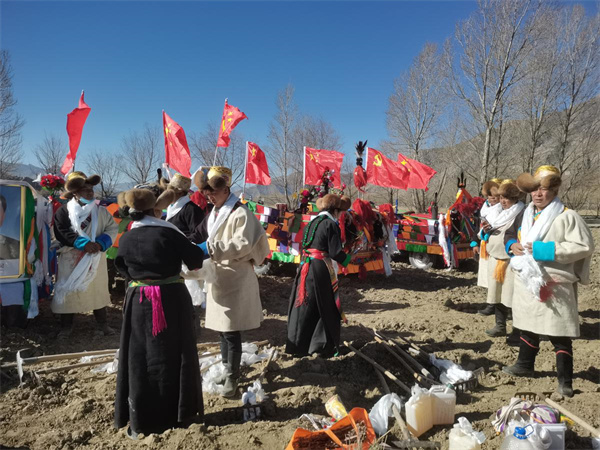
Dressed in their newest and best traditional attire, Tibetan farmers in Chushul county and the Dagze district of Lhasa, Tibet, participate in spring plowing ceremonies on March 16, 2022. [Photo provided to chinadaily.com.cn]








